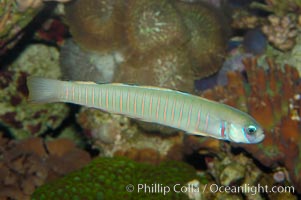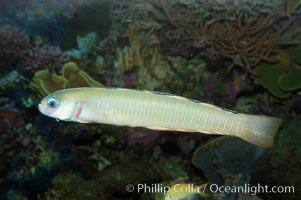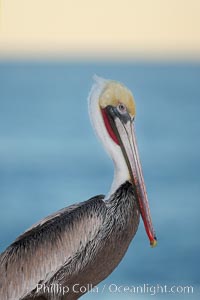
Brown pelican, adult winter non-breeding plumage showing white hindneck and red gular throat pouch.. This large seabird has a wingspan over 7 feet wide. The California race of the brown pelican holds endangered species status, due largely to predation in the early 1900s and to decades of poor reproduction caused by DDT poisoning.
Species: Brown Pelican, Pelecanus occidentalis, Pelecanus occidentalis californicus
Location: La Jolla, California
Image ID: 18052
Species: Brown Pelican, Pelecanus occidentalis, Pelecanus occidentalis californicus
Location: La Jolla, California
Image ID: 18052
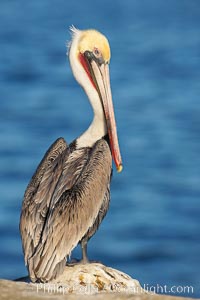
Brown pelican, adult winter non-breeding plumage showing white hindneck and red gular throat pouch.. This large seabird has a wingspan over 7 feet wide. The California race of the brown pelican holds endangered species status, due largely to predation in the early 1900s and to decades of poor reproduction caused by DDT poisoning.
Species: Brown Pelican, Pelecanus occidentalis, Pelecanus occidentalis californicus
Location: La Jolla, California
Image ID: 18067
Species: Brown Pelican, Pelecanus occidentalis, Pelecanus occidentalis californicus
Location: La Jolla, California
Image ID: 18067
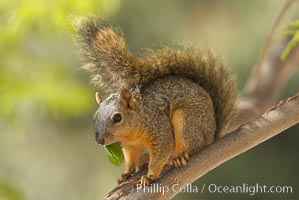
Eastern fox squirrel. The eastern fox squirrel historically occur in the eastern and central portions of North America, but have been introduced in the 1900's to urban areas in the western United States. They are the largest of the North American squirrels, reaching 29 inches in length and up to 3 pounds. They are generalist feeders with a diet that varies according to their habitat, including nuts, seed, bird eggs and chicks, frogs, flowers and agricultural crops.
Species: Eastern fox squirrel, Sciurus niger
Location: Los Angeles, California
Image ID: 18964
Species: Eastern fox squirrel, Sciurus niger
Location: Los Angeles, California
Image ID: 18964
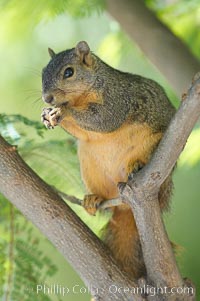
Eastern fox squirrel. The eastern fox squirrel historically occur in the eastern and central portions of North America, but have been introduced in the 1900's to urban areas in the western United States. They are the largest of the North American squirrels, reaching 29 inches in length and up to 3 pounds. They are generalist feeders with a diet that varies according to their habitat, including nuts, seed, bird eggs and chicks, frogs, flowers and agricultural crops.
Species: Eastern fox squirrel, Sciurus niger
Location: Los Angeles, California
Image ID: 18965
Species: Eastern fox squirrel, Sciurus niger
Location: Los Angeles, California
Image ID: 18965
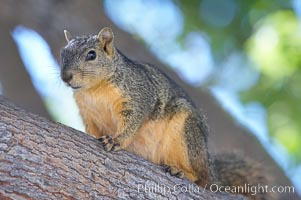
Eastern fox squirrel. The eastern fox squirrel historically occur in the eastern and central portions of North America, but have been introduced in the 1900's to urban areas in the western United States. They are the largest of the North American squirrels, reaching 29 inches in length and up to 3 pounds. They are generalist feeders with a diet that varies according to their habitat, including nuts, seed, bird eggs and chicks, frogs, flowers and agricultural crops.
Species: Eastern fox squirrel, Sciurus niger
Location: Los Angeles, California
Image ID: 18966
Species: Eastern fox squirrel, Sciurus niger
Location: Los Angeles, California
Image ID: 18966
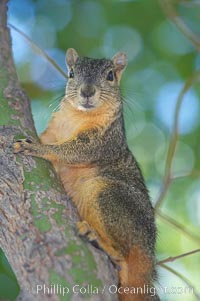
Eastern fox squirrel. The eastern fox squirrel historically occur in the eastern and central portions of North America, but have been introduced in the 1900's to urban areas in the western United States. They are the largest of the North American squirrels, reaching 29 inches in length and up to 3 pounds. They are generalist feeders with a diet that varies according to their habitat, including nuts, seed, bird eggs and chicks, frogs, flowers and agricultural crops.
Species: Eastern fox squirrel, Sciurus niger
Location: Los Angeles, California
Image ID: 18967
Species: Eastern fox squirrel, Sciurus niger
Location: Los Angeles, California
Image ID: 18967
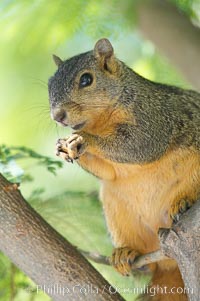
Eastern fox squirrel. The eastern fox squirrel historically occur in the eastern and central portions of North America, but have been introduced in the 1900's to urban areas in the western United States. They are the largest of the North American squirrels, reaching 29 inches in length and up to 3 pounds. They are generalist feeders with a diet that varies according to their habitat, including nuts, seed, bird eggs and chicks, frogs, flowers and agricultural crops.
Species: Eastern fox squirrel, Sciurus niger
Location: Los Angeles, California
Image ID: 18968
Species: Eastern fox squirrel, Sciurus niger
Location: Los Angeles, California
Image ID: 18968
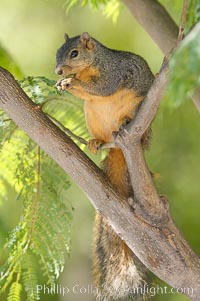
Eastern fox squirrel. The eastern fox squirrel historically occur in the eastern and central portions of North America, but have been introduced in the 1900's to urban areas in the western United States. They are the largest of the North American squirrels, reaching 29 inches in length and up to 3 pounds. They are generalist feeders with a diet that varies according to their habitat, including nuts, seed, bird eggs and chicks, frogs, flowers and agricultural crops.
Species: Eastern fox squirrel, Sciurus niger
Location: Los Angeles, California
Image ID: 18969
Species: Eastern fox squirrel, Sciurus niger
Location: Los Angeles, California
Image ID: 18969
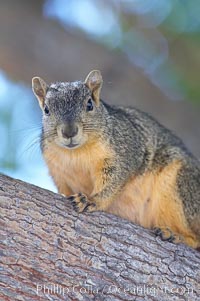
Eastern fox squirrel. The eastern fox squirrel historically occur in the eastern and central portions of North America, but have been introduced in the 1900's to urban areas in the western United States. They are the largest of the North American squirrels, reaching 29 inches in length and up to 3 pounds. They are generalist feeders with a diet that varies according to their habitat, including nuts, seed, bird eggs and chicks, frogs, flowers and agricultural crops.
Species: Eastern fox squirrel, Sciurus niger
Location: Los Angeles, California
Image ID: 18970
Species: Eastern fox squirrel, Sciurus niger
Location: Los Angeles, California
Image ID: 18970
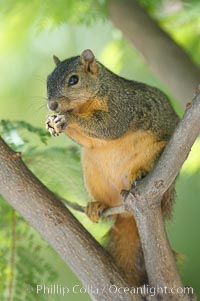
Eastern fox squirrel. The eastern fox squirrel historically occur in the eastern and central portions of North America, but have been introduced in the 1900's to urban areas in the western United States. They are the largest of the North American squirrels, reaching 29 inches in length and up to 3 pounds. They are generalist feeders with a diet that varies according to their habitat, including nuts, seed, bird eggs and chicks, frogs, flowers and agricultural crops.
Species: Eastern fox squirrel, Sciurus niger
Location: Los Angeles, California
Image ID: 18971
Species: Eastern fox squirrel, Sciurus niger
Location: Los Angeles, California
Image ID: 18971
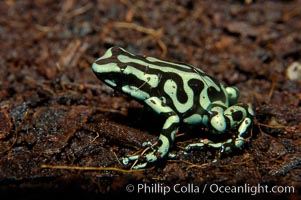
Green and black poison dart frog, native to Central and South America.
Species: Green and black poison dart frog, Dendrobates auratus
Image ID: 09824
Species: Green and black poison dart frog, Dendrobates auratus
Image ID: 09824
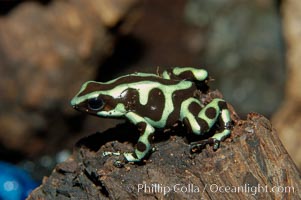
Green and black poison dart frog, native to Central and South America.
Species: Green and black poison dart frog, Dendrobates auratus
Image ID: 09825
Species: Green and black poison dart frog, Dendrobates auratus
Image ID: 09825
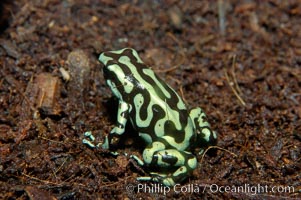
Green and black poison dart frog, native to Central and South America.
Species: Green and black poison dart frog, Dendrobates auratus
Image ID: 09826
Species: Green and black poison dart frog, Dendrobates auratus
Image ID: 09826
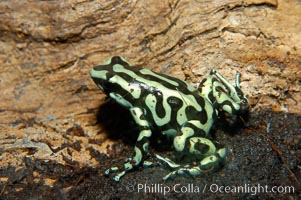
Green and black poison dart frog, native to Central and South America.
Species: Green and black poison dart frog, Dendrobates auratus
Image ID: 09827
Species: Green and black poison dart frog, Dendrobates auratus
Image ID: 09827
